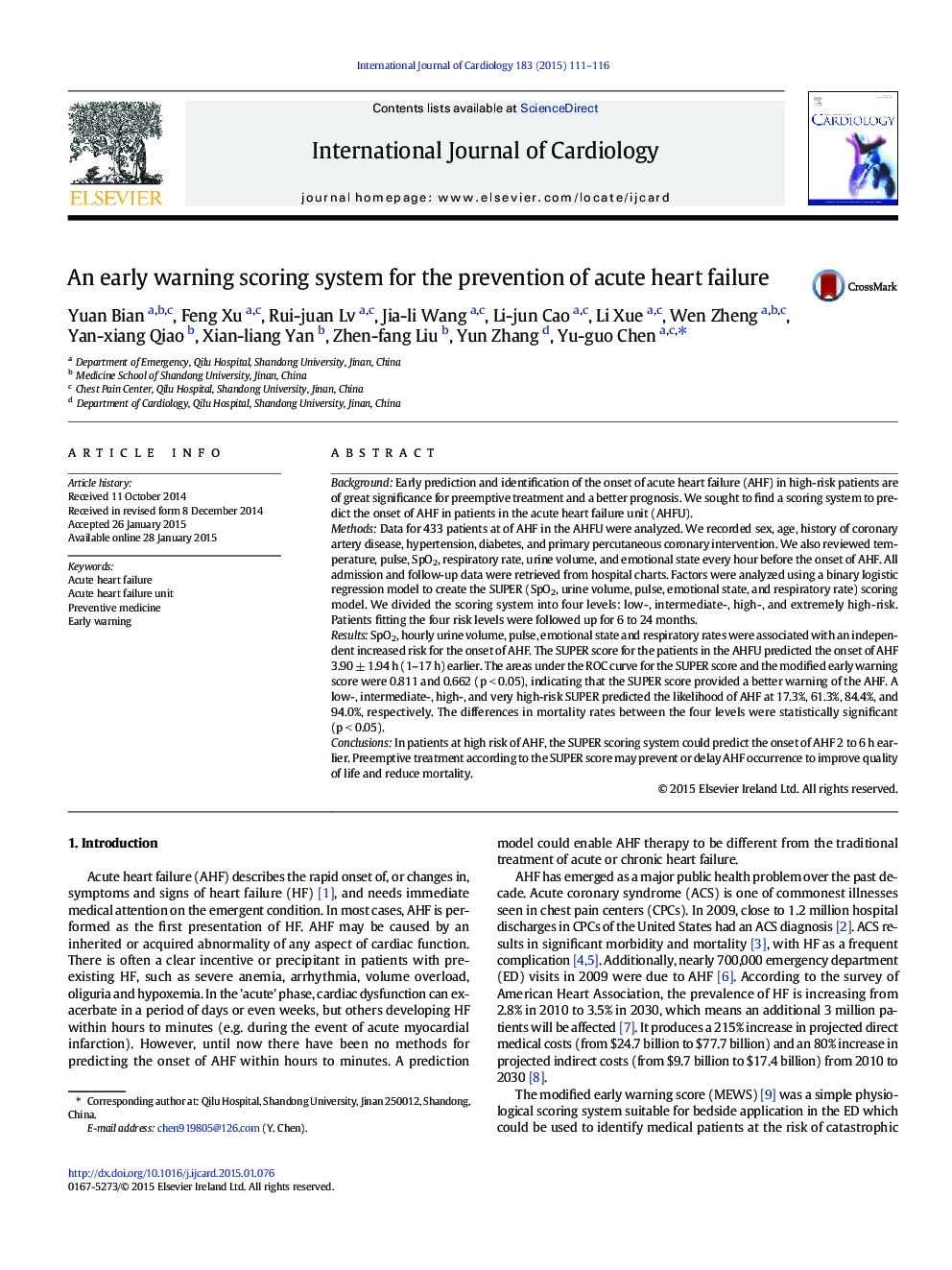| Article ID | Journal | Published Year | Pages | File Type |
|---|---|---|---|---|
| 5968163 | International Journal of Cardiology | 2015 | 6 Pages |
BackgroundEarly prediction and identification of the onset of acute heart failure (AHF) in high-risk patients are of great significance for preemptive treatment and a better prognosis. We sought to find a scoring system to predict the onset of AHF in patients in the acute heart failure unit (AHFU).MethodsData for 433 patients at of AHF in the AHFU were analyzed. We recorded sex, age, history of coronary artery disease, hypertension, diabetes, and primary percutaneous coronary intervention. We also reviewed temperature, pulse, SpO2, respiratory rate, urine volume, and emotional state every hour before the onset of AHF. All admission and follow-up data were retrieved from hospital charts. Factors were analyzed using a binary logistic regression model to create the SUPER (SpO2, urine volume, pulse, emotional state, and respiratory rate) scoring model. We divided the scoring system into four levels: low-, intermediate-, high-, and extremely high-risk. Patients fitting the four risk levels were followed up for 6 to 24 months.ResultsSpO2, hourly urine volume, pulse, emotional state and respiratory rates were associated with an independent increased risk for the onset of AHF. The SUPER score for the patients in the AHFU predicted the onset of AHF 3.90 ± 1.94 h (1-17 h) earlier. The areas under the ROC curve for the SUPER score and the modified early warning score were 0.811 and 0.662 (p < 0.05), indicating that the SUPER score provided a better warning of the AHF. A low-, intermediate-, high-, and very high-risk SUPER predicted the likelihood of AHF at 17.3%, 61.3%, 84.4%, and 94.0%, respectively. The differences in mortality rates between the four levels were statistically significant (p < 0.05).ConclusionsIn patients at high risk of AHF, the SUPER scoring system could predict the onset of AHF 2 to 6 h earlier. Preemptive treatment according to the SUPER score may prevent or delay AHF occurrence to improve quality of life and reduce mortality.
